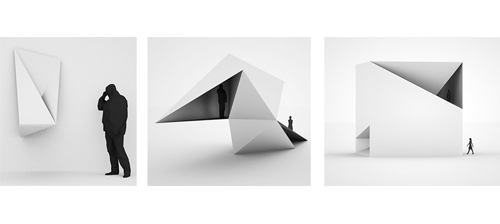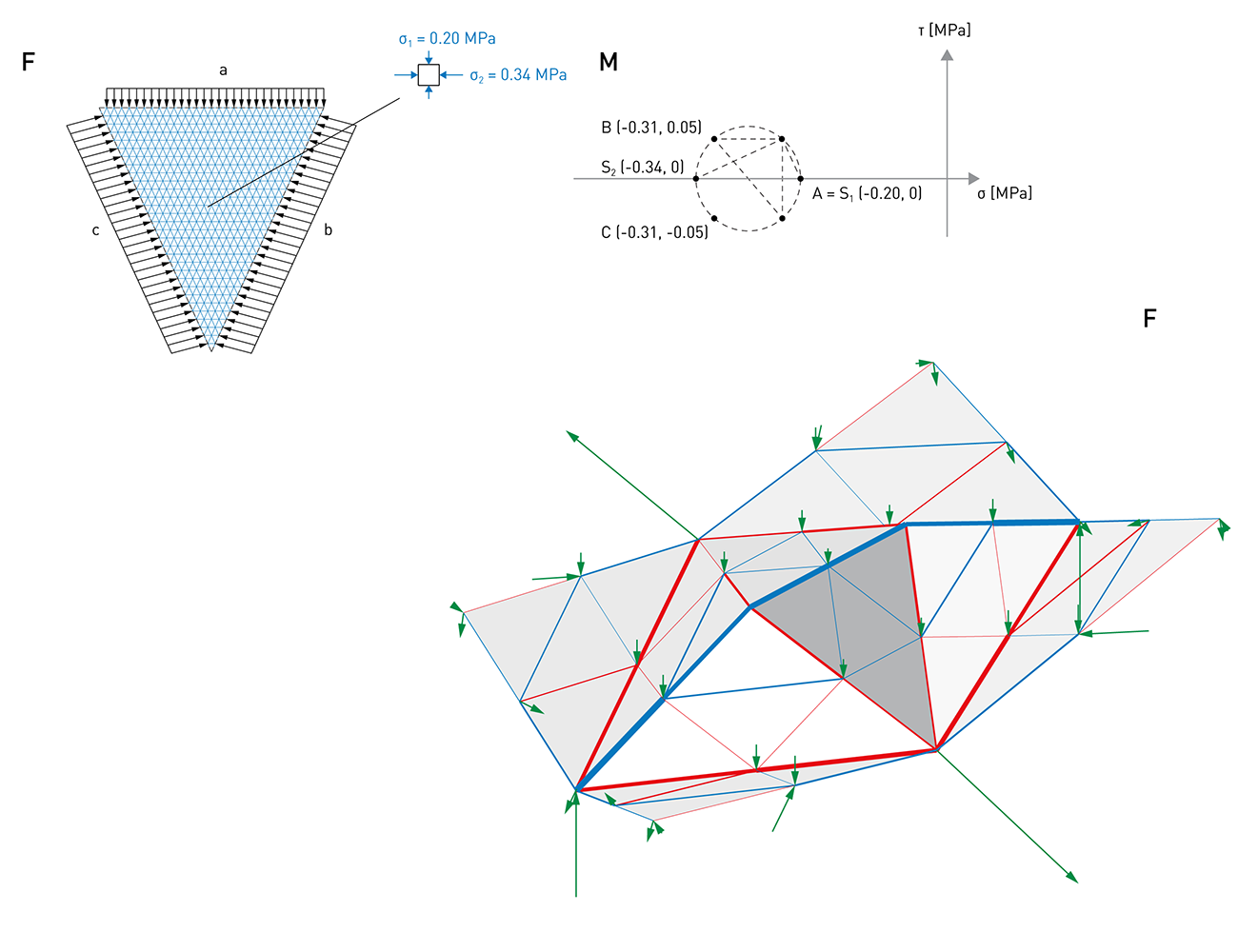|
Structural Folding for Architectural Design |
P. D'Acunto 2013 - 2018 |

The use of folding in design allows for the production of efficient structures capable of resisting the external applied loads through their form rather than an accumulation of material. Additionally, folding represents an effective operation for generating architectural forms that are able to address diverse spatial and programmatic necessities.
The goal of this research is to develop a design method that integrates structural folding in architecture. The method takes advantage of the interplay of the spatial and structural properties of folded plate geometries, as a way to effectively combine architectural and engineering thinking towards a holistic approach to design. The method is aimed at supporting the design process starting from the early conceptual stages and relies on four basic geometric operations. Specifically, a kinematically stable folded plate geometry is designed within a predefined tetrahedral grid to produce an enclosed architectural space. Without losing its inherent topological properties, the form of the folded plate geometry can be manipulated according to the specific design requirements by adjusting the position of the nodes of the grid. Grounded on the Theory of Plasticity, the structural behavior of the system is evaluated using a model for folded plate structures where the resultants of the inner stresses are transferred via the folded edges. Relying on geometric operations only, the proposed design method is in general material and scale independent, therefore allowing the same strategy to be applied to diverse design scenarios.
The definition of the design method is informed by the development of digital and physical experiments. A parametric digital tool based on three-dimensional graphic statics has been built and used to generate folded structures as case studies at various scales; moreover, the production of a series of full-scale prototypes has been put forward to test the method and to provide a feedback for the theoretical advances.

last modified 6.12.2016